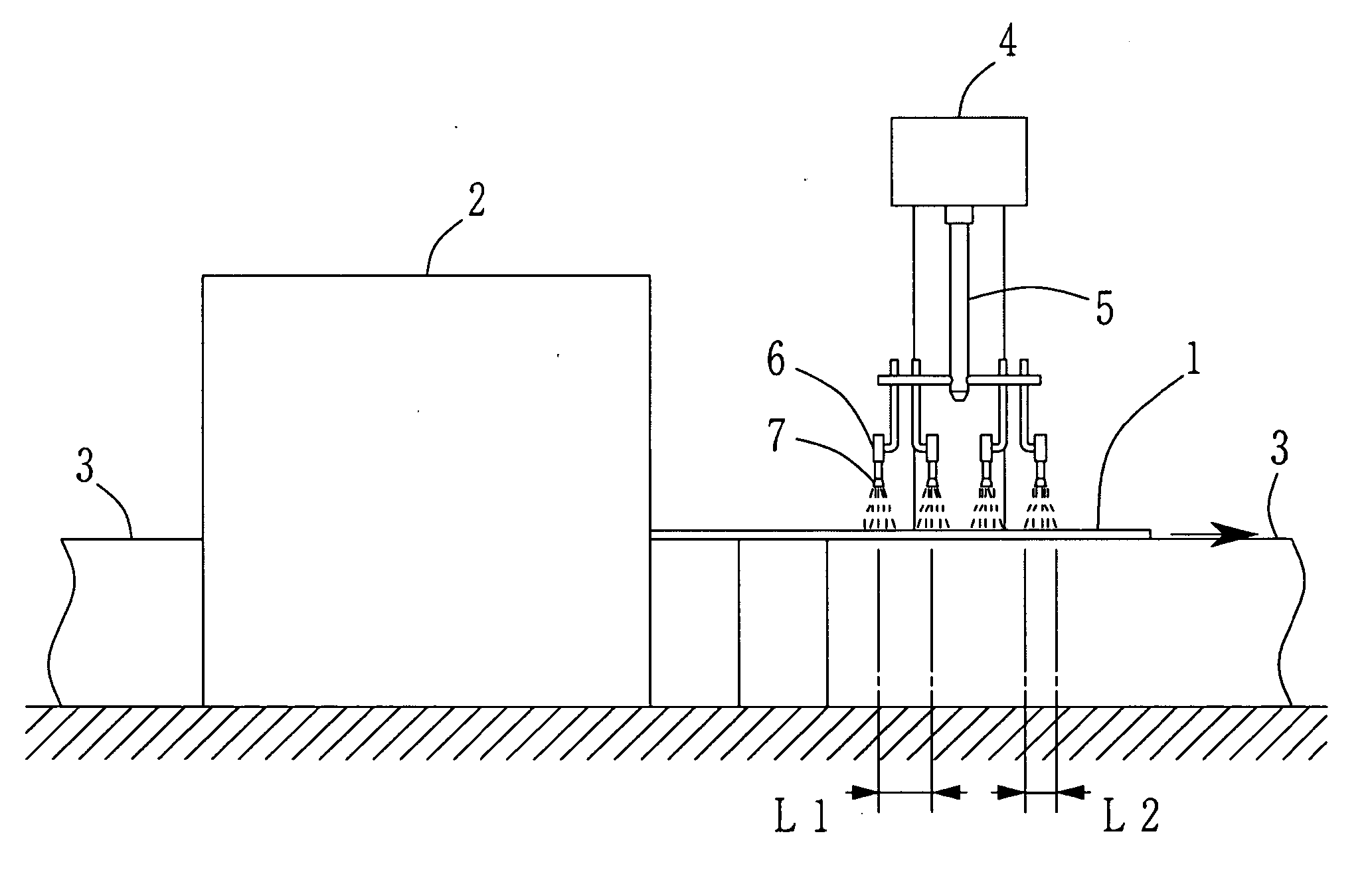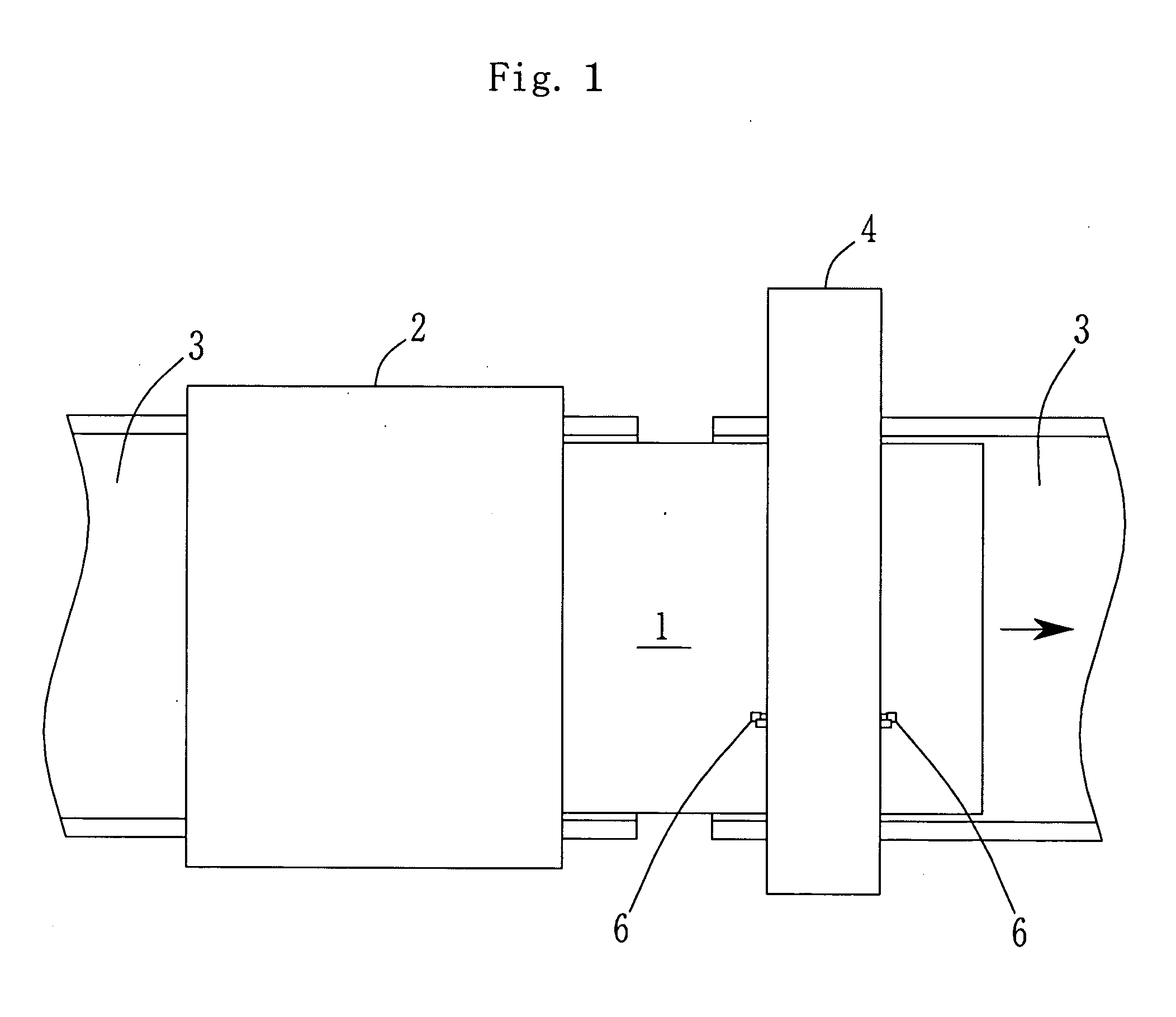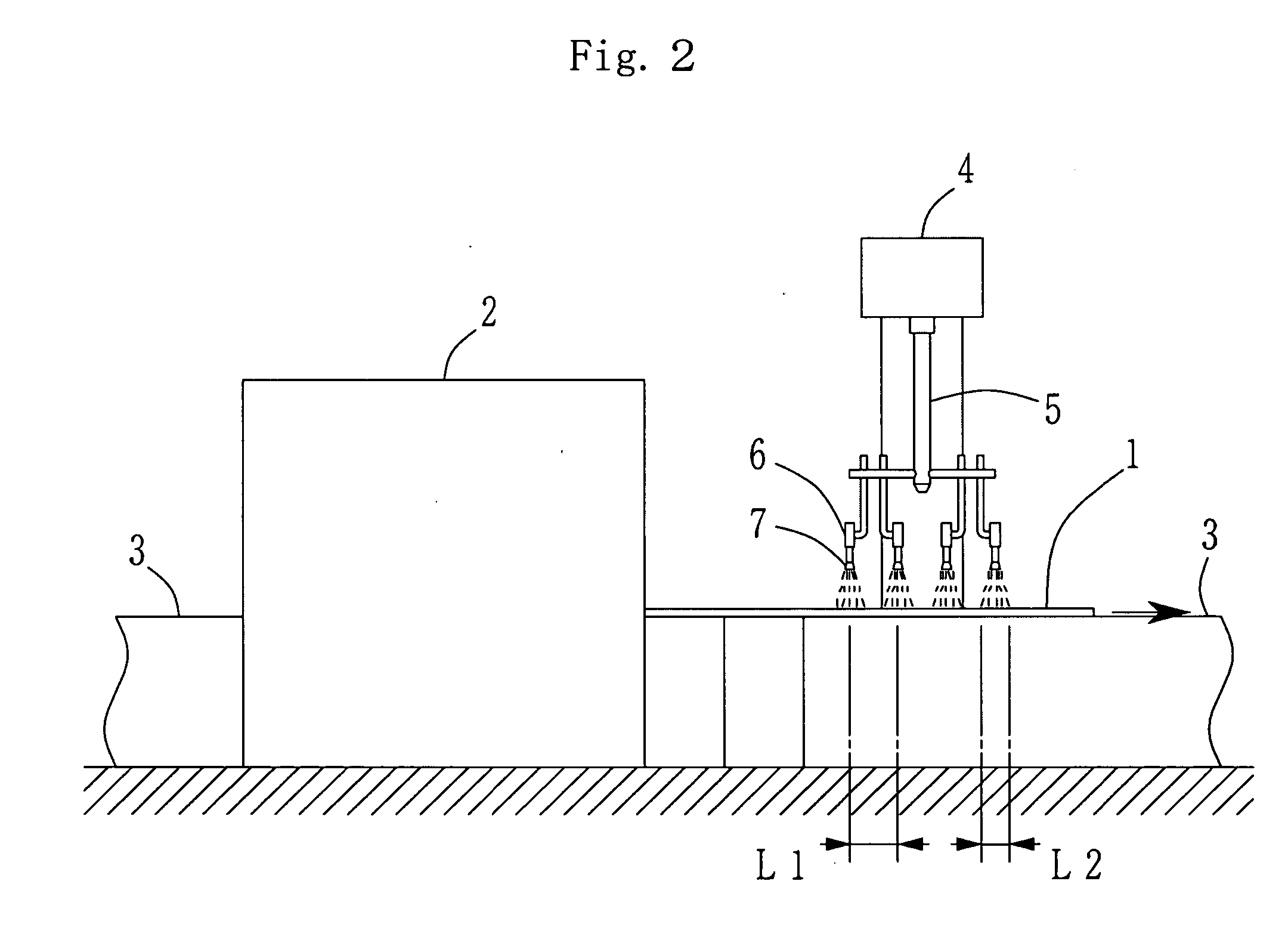Method for producing glass sheet coated with titanium oxide thin film
a technology of titanium oxide and thin film, applied in the direction of coatings, etc., can solve the problems of interference fringes of coated glass sheets, and achieve the effects of increasing surface compressive stress, good adhesiveness, and low surface area
- Summary
- Abstract
- Description
- Claims
- Application Information
AI Technical Summary
Benefits of technology
Problems solved by technology
Method used
Image
Examples
example 1
[0075] Soda lime glass having a length of 1000 mm, a width of 1000 mm and a thickness of 4 mm was used as the starting material. The soda lime glass contains 10% by weight of an alkali metal, sodium, and its softening temperature measured according to ASTM C338-57 is from 720 to 730° C. The surface compressive stress of the soda lime glass substrate on the side of the tin-diffused layer was measured according to JIS R3222, and it was 6.3 MPa. Both surfaces of the soda lime glass were washed with sponge with 1 N aqueous acetic acid solution and then washed with water, and further washed with sponge with an aqueous dilution of surfactant. Next, the surfactant was washed away with a large amount of water, and then water was removed from the glass substrate through air-blowing.
[0076] Thus washed, the glass substrate was kept stood against a wall, and a titanium oxide particles-containing sol was applied to the other surface of the glass substrate opposite to its tin-diffused layer, by ...
example 2
[0088] The same titanium oxide particles-containing sol as in Example 1 was applied to a soda lime glass substrate that had been washed and dried in the same manner as in Example 1. The washed glass substrate was stood against a wall, and its side opposite to the tin-diffused layer side of the glass substrate was previously heated with an IR heater so that the surface temperature could be about 35° C. Using an air spray gun, the titanium oxide particles-containing sol was applied to the heated surface of the glass substrate under the same condition as in Example 1. Concretely, the air pressure applied to the spray gun is 0.2 MPa (its differential pressure from the atmospheric pressure is about 0.1 MPa), and the jet mist amount out of the nozzle of the gun per unit time is 5 ml / min. Under the condition, the sol was applied to the glass substrate spaced from the nozzle tip by a constant distance of 15 cm, while the nozzle was moved in the horizontal direction. After the nozzle reached...
example 3
[0090] The same titanium oxide particles-containing sol as in Example 1 was applied to a soda lime glass substrate that had been washed and dried in the same manner as in Example 1. For the coating, used was a commercially-available ultrasonic spray for humidification. The sol in the tank of the spray was heated at 90° C., and then sprayed onto the glass substrate having a surface temperature of 23° C. Spaced by 20 cm from the glass substrate, the sol was sprayed to make the resulting mist of liquid drops uniformly adhere to the glass substrate. After having been applied to the glass substrate, the sol mist was dried with a drier. Also in the coating operation, the glass substrate was lightly fogged immediately after coated but soon became transparent after dried, like in Example 1. Before and after the drying, there was found no coloration that would be derived from the interference color of the coating film.
[0091] The glass sheet thus coated with the coating film was heated in th...
PUM
| Property | Measurement | Unit |
|---|---|---|
| Temperature | aaaaa | aaaaa |
| Temperature | aaaaa | aaaaa |
| Temperature | aaaaa | aaaaa |
Abstract
Description
Claims
Application Information
 Login to View More
Login to View More - R&D
- Intellectual Property
- Life Sciences
- Materials
- Tech Scout
- Unparalleled Data Quality
- Higher Quality Content
- 60% Fewer Hallucinations
Browse by: Latest US Patents, China's latest patents, Technical Efficacy Thesaurus, Application Domain, Technology Topic, Popular Technical Reports.
© 2025 PatSnap. All rights reserved.Legal|Privacy policy|Modern Slavery Act Transparency Statement|Sitemap|About US| Contact US: help@patsnap.com



